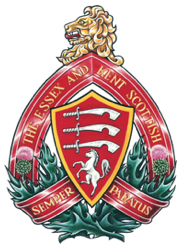A Concise History
The Essex and Kent Scottish is one of Canada's oldest infantry regiments. It has a regimental history that dates to 1749 as French militia at Fort Pontchartrain (Detroit) although it has unbroken lineage dating to 12 June 1885. Essex and Kent counties produced the first militia organization in Ontario and the first units to engage in combat (1794) outside Canada.
Formative Period
Between 1749 and 1885, both Essex and Kent militia were raised from time to time for specific tasks such as local defense of the garrison against First Nations in 1763 and expeditions into the frontier in 1778-80 during the American Revolutionary War. After that the militia took on a more formal battalion structure and in 1794 border tensions required their mobilization for combat in what is now Michigan.
To view the Concise History of the Regiment in flipbook style click here:
http://online.pubhtml5.com/tasd/rcrb/

During the War of 1812-15, the garrison at Fort Amherstburg was strengthened with the call out of the Regiments of Essex Militia and Kent Militia. After a brief incursion into Essex County the Americans returned to the safety of Fort Detroit. A combined force of Essex and Kent militia, British regulars, other Upper Canada militia and First Nations warriors crossed the Detroit River and forced the surrender of Fort Detroit. A portion of the Prize Pay List for the 2nd Regiment of Essex Militia from this capture presently hangs in the Tilston Armoury, Windsor. For the next year the British and the militia of Essex and Kent fought in Michigan and Ohio. By June 1813 with their fighting done and farms in need of care the Essex and Kent militia regiments were dismissed home. Following the decisive American victory in October 1813 near Moraviantown in Kent County, many continued to fight in the Niagara region as the Essex and Kent militia or volunteered with other units. In 2012, four Battle Honours were awarded to these militia units which are perpetuated by The Essex and Kent Scottish. (Ch2)
The Essex and Kent volunteers mobilized for the Patriot War of 1838 and fought battles at Amherstburg, Fighting Island, Pelee Island and Windsor. At the time there were three regiments in each of the Essex and Kent militia. The Patriot War was the last time that Essex and Kent counties were invaded. Other events requiring the call out of the militia were the threat of war with the United States following "The Trent Affair" in 1861 and unrest in 1866 caused by the Fenian Raids following the American Civil War. In the intervals between these events, however, the various militia regiments were disbanded or neglected and there was no historical continuity.
It is significant that in the early days the Essex militia fought alongside the Kent militia and it was a natural and logical progression that the two regiments would eventually be united to form The Essex and Kent Scottish in 1954.
In the 1880s a campaign was mounted to re-establish a militia battalion. As a result of activity generated by the North West Rebellion in 1885, success was achieved on 12 June 1885 with formation of the 21st Essex Battalion of Infantry consisting of five companies and with Lt Col J.R. Wilkinson commanding. It is from this date that the Regiment celebrates continuous service to Canada.
In July 1886 the ladies of Essex County presented the first Colours to the unit at Ouellette Square. In 1887 the name was changed to the 21st Battalion Essex Fusiliers. During July 1899 the 21st was called upon to provide aid to the civil power when there was rioting in London in connection with the Street Railway strike. The name changed again in 1900 to 21st Regiment Essex Fusiliers. Another event of note was the change from a county to a city unit in 1901. The Fusiliers were also chosen to participate in the celebration of welcome for the Duke and Duchess of York in Toronto on 9 October 1901.
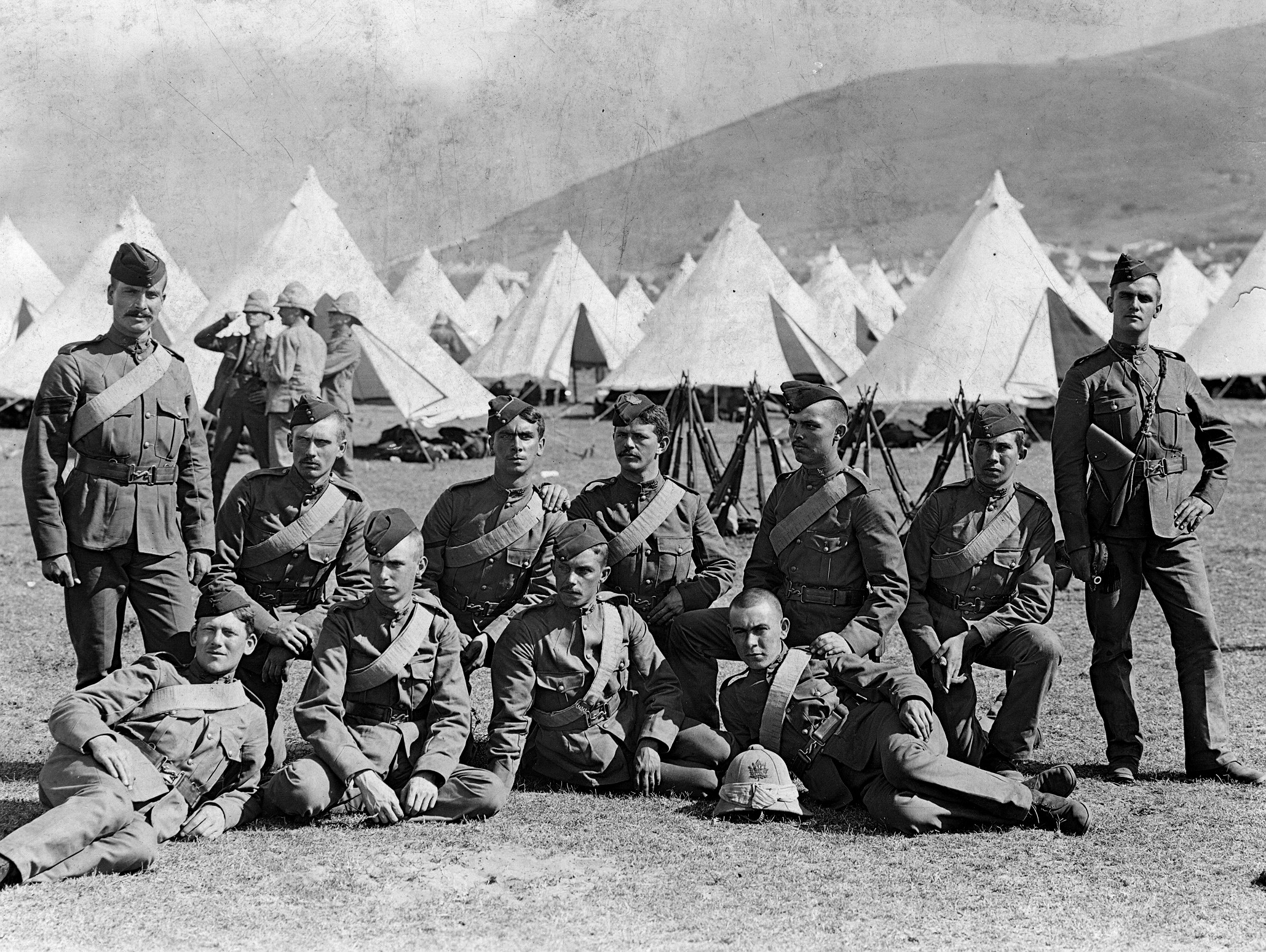
While hundreds volunteered for service in 1899 with the 2nd Special Service Battalion in the South African War, the CO of the Fusiliers, Lt Col J.C. Guillot, was limited to a quota of just 20 men while seven came from the 24th Kent Regiment. The Essex County South African War Memorial is located on the south side of Queen Elizabeth II Gardens in Jackson Park, Windsor. Three local men died during service in South Africa: Colour Sergeant Walter White and Hospital Sergeant Harry Barr from the Fusiliers and Private John Donegan from the Kents.
Following the war much improved conditions were created for the Fusiliers with the formal opening of the armouries in Windsor in February 1902. A second set of colours were presented to the Fusiliers in October 1902. The 24th Kent Regiment was equally fortunate, not only with being reactivated on 1 January 1901 under command of Lt Col J.B. Rankin but also moving into their armouries on William Street in Chatham in 1905.
In 1904, the 21st Regiment Essex Fusiliers were accorded a unique honour by being the first foreign unit to parade on U.S. soil when they paraded in St. Louis, Missouri for the World’s Fair.
World War I
When Britain went to war in 1914 Canada was automatically at war too. Recruiting was strong across most of Canada although it was decided by the government to form composite units as opposed to activating existing militia units. The 21st Regiment Essex Fusiliers and the 24th Kent Regiment each sent small components to the 1st (Western Ontario) Battalion, Canadian Expeditionary Force (C.E.F.) based in London. The 1st Battalion went overseas in October 1914 as part of the First Contingent that would become the 1st Canadian Infantry Division.
18th Battalion, C.E.F.

Immediately, recruiting began for a Second Contingent. Lt Col E.S. Wigle, CO of the 21st Regiment Essex Fusiliers was appointed CO of the new 18th Battalion, C.E.F. and drew soldiers from the Fusiliers, the 24 Kent Regiment and other militia units in Southwestern Ontario. The 18th Battalion went overseas in April 1915 and into the front trenches on 27 September as part of 2nd Canadian Infantry Division. The first real action came on 8 April 1916 at St. Eloi Craters near Ypres and it did not go particularly well. What followed was a regular routine of trench warfare broken up with training time while in reserve. The 18th Battalion got much better with experience and participated in every action of the 2nd Division most notably Courcelette (Somme), Vimy Ridge, Hill 70, Passchendaele, and the Final Hundred Days from Amiens to Mons. By the end of the war only 100 of the original 1,000 soldiers were still serving in the 18th Battalion. This unit earned its share of gallantry awards: 11 DSOs, 33 MCs, 20 DCMs, 203 MMs and numerous foreign medals. In addition, L/Sgt Ellis W. Sifton of Wallacetown was posthumously awarded the Victoria Cross for his heroic action at Vimy Ridge on 19 April, 1917. He single-handedly charged an enemy machine gun, which had been holding up his company's advance and killed all the crew. He then held off the enemy until his comrades had captured their objective. He was killed during the fighting. The 18th Battalion was awarded 18 Battle Honours for its involvement in the war and is perpetuated by The Essex Fusiliers.
Perpetuated Battalions
Back in Canada the 24th Kent Regiment raised and sent components to the 33rd, 70th, 71st and 91st Battalions and formed the 186th Kent Overseas Battalion commanded by Lt Col Neil Smith. The 186th was broken up when it arrived in England to provide replacements although it was awarded the battle honour "The Great War 1917". In Windsor, the 21st Regiment Essex Fusiliers provided the nucleus for the formation of two new Essex County units: the 99th Battalion commanded by Lt Col T. B. Welsh and 241st Canadian Scottish Borderers under the command of Lt Col W. L. McGregor. The 99th and 241st were also broken up in England to provide replacements and respectively received the battle honours, “The Great War 1916” and “The Great War 1917”.
Between the Wars
Following the Great War, the 21st Regiment Essex Fusiliers was disbanded and reorganized as The Essex Fusiliers. Similarly, the 24th Kent Regiment was reorganized as The Kent Regiment. In 1926 the Fusiliers became officially allied with The Essex Regiment of the British Army while in 1927 the Kents were allied with The Queen’s Own Royal West Kent Regiment.
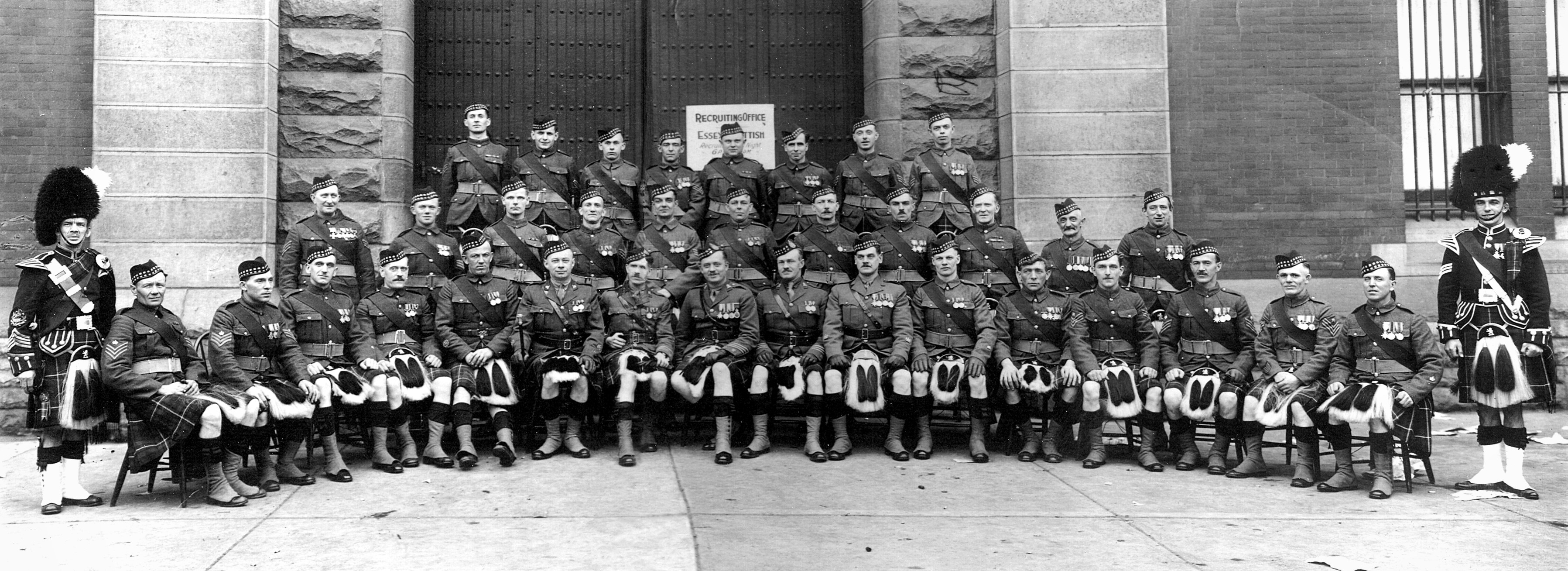
A most significant event happened in 1927 when, under the command of Lt Col Alan Prince, the Fusiliers were renamed The Essex Scottish and adopted the MacGregor tartan as highland dress that is still worn today. Lt Col Prince was the great-grandson of Colonel John Prince who was commander of the 3rd Regiment of Essex Militia during the Patriot War of 1838. Pipe Major Jock Copland, who served with the 241st Canadian Scottish Borderers and The Essex Fusiliers, led the Pipe Band from 1927 until 1958. In 1929 the Regiment began a unique tradition in North America by parading to St. Paul's Cathedral in Detroit to celebrate Empire Day. The tradition continued until the mid-1970s with the exception of the two years when Canada was at war and the U.S. was not. The Regiment received considerable media coverage because of its participation in the New York World's Fair held in 1929, the New Orleans Mardi Gras and the Chicago Century of Progress Exposition in 1933. Another highlight occurred on 11 November 1931 at Kennedy Collegiate Stadium when the Regiment received its King's and Regimental Colours complete with battle honours.
Training remained at a high level as exhibited by the fact that The Essex Scottish won the Canadian Infantry Cup for Efficiency eight of the 12 years before 1939. Shooting was also one of the Regiment's strong points as they won several provincial and national championships with the Lewis Gun and rifle under the coaching of Lt Tom Hayhurst, himself a Bisley shot. On 15 December1936 The Essex Regiment (Tank) now the Windsor Regiment (R.C.A.C.) was formed, its nucleus being made up of officers and NCOs from The Essex Scottish. This fine Regiment shares the Tilston Armouries with us and shares our motto: Semper Paratus. On 21 May 1938, The Essex Scottish became only the sixth regiment of the Commonwealth to receive freedom of a city when the Mayor and Council of the City of Windsor granted this right. The City of Chatham granted the same right to the Regiment on 25 May 1985.
In Chatham, The Kent Regiment was also busy training. In 1936, under the command of Lt Col T.E. Codlin, the Kents changed from infantry to a machine gun unit and was renamed The Kent Regiment (Machine Gun). It remained so until reverted back to an infantry unit in 1941. Lt Col Codlin commanded for an amazing eight years including fours years of active service.
World War II
When Canada went to war in September 1939, The Essex Scottish was more or less ready when called into active service. In sixteen days of recruiting 27 officers and 812 other ranks were enlisted. Preliminary training was done at the St. Luke Road barracks in Windsor and in May 1940, moved to Camp Borden under the command of Lt Col A.S. Pearson. The 1st Battalion, The Essex Scottish Regiment (CASF) left Halifax on 23 July and reached England on 2 August, settling into Maida Barracks in Aldershot. The Scottish carried out many training exercises and some coastal defense in the south of England as the threat of invasion heightened. The Kent Regiment was not called into active service until August 1940.
Dieppe Raid
On 27 January 1942, command of the 1st Battalion passed to Lt Col F.K. Jasperson and by spring the training tempo picked up since plans were underway for 4th Brigade, 2nd Canadian Division to carry out a raid somewhere on the north coast of France on 4 July. The raid was cancelled, only to be revived a month later. Operation JUBILEE, the code word for the Dieppe Raid, commenced under the cover of Exercise FORD Mk. l on 18 August when the battalion boarded assault landing craft at Southampton and Portsmouth. The convoy crossed the channel, and part of the flotilla had a chance firefight with a German convoy on its way to France. As the landing craft touched down on Red Beach as part of the main assault, they met intense artillery, mortar and machine gun fire from the esplanade between the beach and the town and from the headlands on either side.
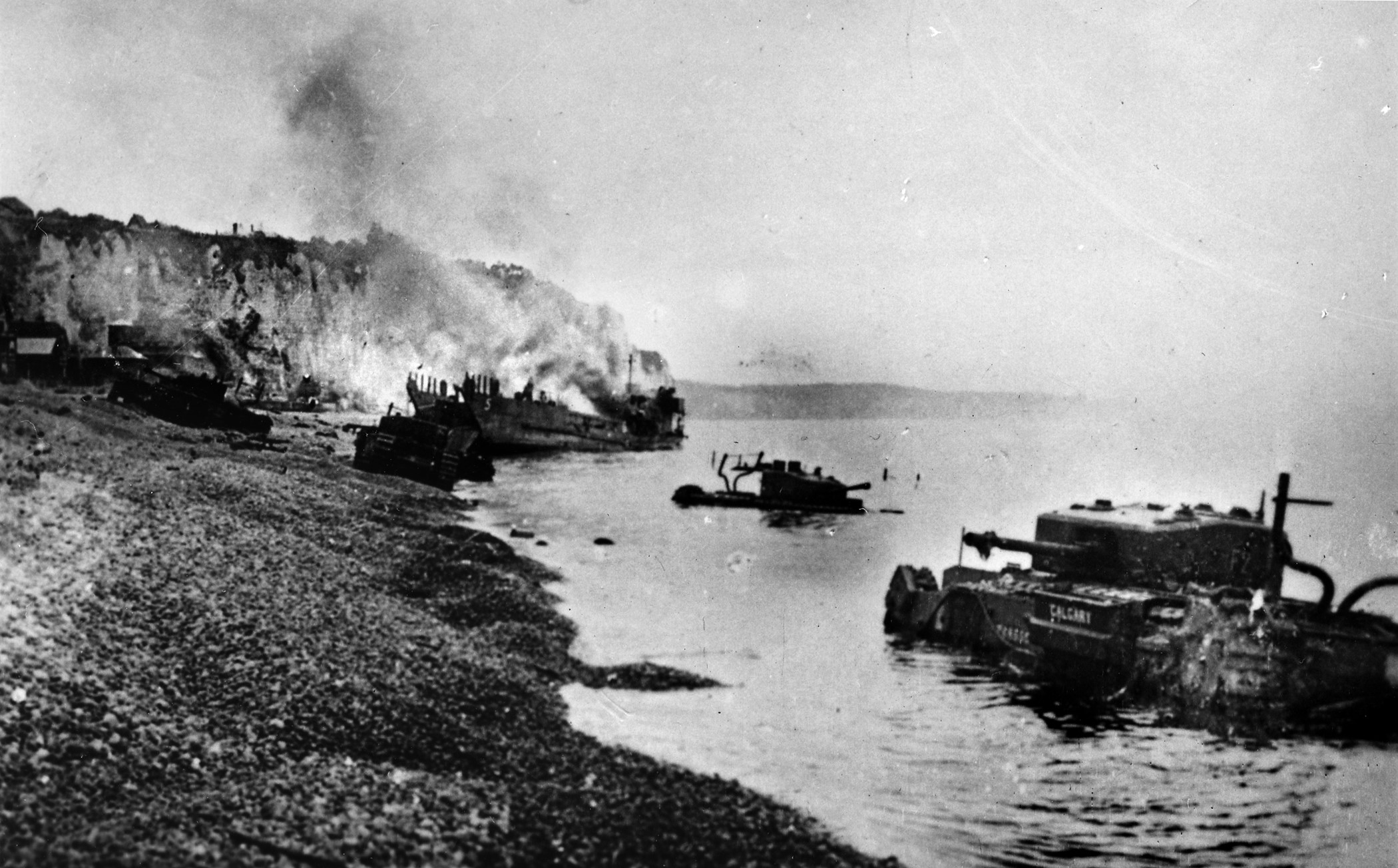
Heavy casualties were suffered and the battalion was unable to carry out its objectives. Only 11 men under the leadership of CSM Con Stapleton were able to cross the esplanade and penetrate enemy positions in the town. By 0630 hours the battle was effectively over for the Scottish. Withdrawal was ordered for 1100 hours but continual dive-bombing of the naval elements offshore prevented most of the landing craft from returning to the beach to pick up the survivors. Of 32 officers and 521 other ranks who took part in the Dieppe raid, only two officers and 49 other ranks made it back to England, some wounded. The CO, Lt Col Jasperson was captured.
France, Belgium, Holland and Germany
Lt Col J.H. Mothersill assumed command immediately after the raid and set out to rebuild, reorganize and train, all the while carrying out operational tasks. Lt Col B.J.S. Macdonald assumed command on 23 May 1943 and training continued in England and Scotland. Exercises were a constant feature of military routine with the occasional highlight such as a battalion march past to bid farewell to RSM W.E. Potts in July (who ironically was on the Normandy beach when the Scottish came ashore after D-Day) and the winning of the brigade sports day on 1 December.
The Essex Scottish returned to France on 5 July 1944 landing at La Valette to exploit the D-Day landing of 6 June. The first casualties and capture of prisoners took place on 11 July. Intensive fighting around Ifs and Bourguebus Ridge on 20-21 July resulted in 281 casualties. On 29 July, under its new Commanding Officer Lt Col T.S. Jones, the Essex Scottish again pushed forward and this time were successful. Six received bravery awards for their action that day. The next battle for Falaise involved the Essex Scottish on 7-8 August in a night attack of Caillouet mounted in armoured personnel carriers. Lt Col Jones was a casualty and replaced by Lt Col P. W. Bennett who continued the advance down the road to Falaise. After that the German resistance lessened and the advance continued across the Seine River at Pont du Gravier then north toward Dieppe. On 3 September 1944 the Essex Scottish entered Dieppe as heroes. They paused at the graves of those who had fallen in 1942, took part in a Divisional march past and toured the killing grounds.
On the night of 20 September, on the outskirts of Antwerp a large German fighting patrol got into ‘D’ Company's area and in the action, Lt Col Bennett was wounded. On 26 September Lt Col J.E.C. Pangman joined the unit as Commanding Officer. For the next month the battalion was involved in the deadly fighting to clear South Beveland and allow the opening of the Scheldt estuary to the Port of Antwerp. Now much needed supplies could be easily brought to the Allied Armies.
Christmas was spent in the line east of Grosbeek listening to enemy broadcasts of Christmas carols. New Years was spent in reserve near Boxtel then it was back to Grosbeek and patrols probing the German positions.
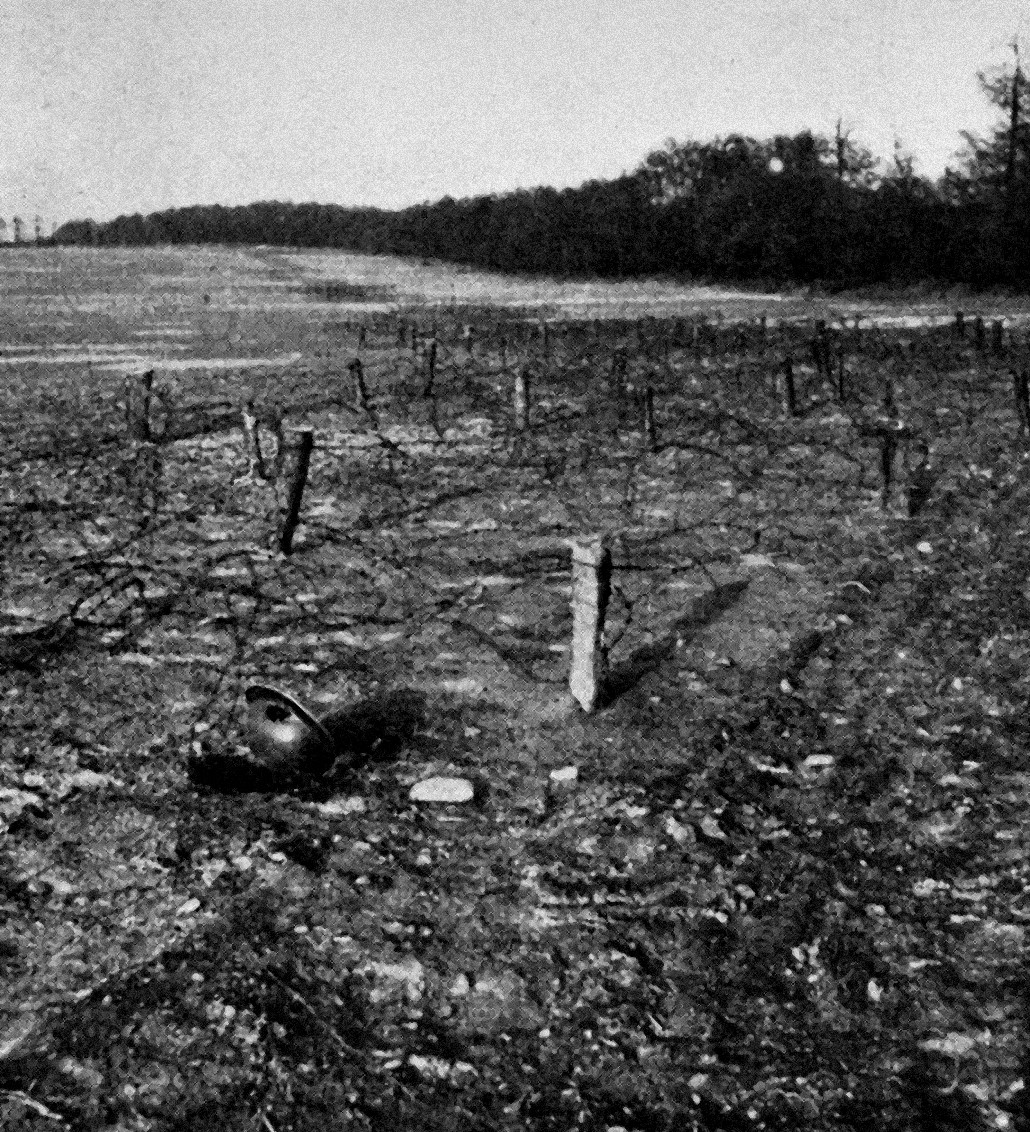
The battalion crossed onto German territory and on 18 February attacked Louisendorf between Goch and Calcar. The mud limited the movement of infantry and tanks. After a successful attack albeit with heavy casualties the Germans mounted a determined counterattack with tanks and infantry. If not for ‘A’ Company commanded by Major K.W. MacIntyre and the anti-tank guns the position would have been lost. The battalion had 150 killed and wounded in two days. CSM Les Dixon earned a second bar to his MM; he was the only Canadian to earn the award three times.
On the morning of 1 March as part of a divisional operation the battalion assaulted the Hochwald Forest with two companies forward. Despite withering machine gun fire, artillery and strong German defenses, ‘C’ Company commanded by Acting Major Fred Tilston was able gain a foothold and allow the other companies to solidify the position. Major Tilston made at least six trips to get ammunition for his men and was wounded three times including serious injuries to both legs. For his calm courage, gallant conduct and superb leadership he was awarded a Victoria Cross. The next operation was the capture of Xanten on 8 March and this wasn’t much easier with 119 casualties compared to 138 at the Hochwald.
After a period of rest the battalion was moved back into Holland. With the enemy in retreat events moved quickly. On 14 April the Essex Scottish captured the bridge into the old town of Groningen. Then it was back into Germany and by 23 April the battalion was on the Bremen-Oldenberg road. On the banks of the canal near Oldenberg, ‘C’ Company accepted the surrender of nine officers and 351 other ranks. Hostilities ceased at 0800 hours on 5 May. Lt Col Pangman returned from hospital but was recalled to Canada on 17 May. The Scottish finished the war under command of Lt Col K. W. Maclntyre, the last of its original officers from September 1939. During the brief occupation the battalion was visited by many senior officers including Lt Col J.E. McCorkell, CO of the 2nd (Reserve) Battalion and Lt Col Jasperson, CO for the Dieppe Raid.
The 1st Battalion of the Scottish returned to Canada and was disbanded on 15 December with the dubious record of having the highest number of casualties of any unit in the Canadian Army: 553 killed and roughly 2,000 wounded. The Essex Scottish was awarded 18 Battle Honours for its involvement in the war.
The Home Front

The Kent Regiment did not go overseas as a unit but was on active duty for coastal defense in NS and BC; and power station guard near Niagara Falls. They also provided reinforcements to many Ontario units serving overseas, most importantly the Essex Scottish, especially after Dieppe. It was a proud occasion in 1941 when the Colonel-in-Chief, HRH Prince George, Duke of Kent inspected his Regiment in Halifax. Both The Kent Regiment and The Essex Scottish raised 2nd Battalions for reserve service in Canada as Non-Permanent Active Militia (NPAM).
Post World War II
The post war period once again involved reorganization. On 1 October 1954 The Essex Scottish and The Kent Regiment were amalgamated to form The Essex and Kent Scottish. H.R.H. Princess Marina, Duchess of Kent, Colonel-in-Chief for the Kents and aunt to Her Majesty Queen Elizabeth II, accepted the appointment as Colonel-in-Chief of the new Regiment. In August she had visited Windsor and Chatham.
In 1951 The Essex Scottish formed a Guard of Honour for the visit to Windsor of the then Princess Elizabeth and Prince Philip. The Regimental Colours were trooped in 1955. An ambitious and successful training exercise took place in October 1958 when the Regiment, under command of Lt Col K.S. Kersey, joined with the 5th U.S. Marine Battalion in a helicopter-borne assault on Boblo Island which was “defended” by U.S. Marines from Toledo, Ohio. The highlight of 1959 was the formation of a Guard of Honour for the visit to Windsor of H.M. Queen Elizabeth II and Prince Philip.
On 28 May 1960 the Regiment received new Colours and for the first time the Regimental Colour had The Essex and Kent Scottish shield and ten Second World War battle honours. The old Essex Scottish Colours were deposited in the newly dedicated chapel in the Windsor Armouries. The new Colours were trooped in Chatham for the first time on the following day. The Kent Regiment had laid up their Old Colours in Christ Church, Chatham in 1955. From 7 March 1962 to 28 February 1965 the Regiment was expanded to two battalions with the 1st Battalion in Windsor under Lt Col J.A. Baxter and 2nd Battalion in Chatham under Lt Col T. Wilcox.
Canada’s Centennial Year in 1967 was celebrated in the Chatham garrison with a platoon equipped and trained as 41th Regiment of Foot to re-enact the Battle of Moraviantown. 1973 was another good year for the Scottish winning the Kitching Trophy as the best militia unit in Central Militia Area. Over the next 20 years there was increasing emphasis on recruiting and training, and support of the Regular Force which enabled members of the Regiment to serve on NATO exercises in Germany and Norway and UN operations in Cyprus and the Middle East. (Ch1)
After the Cold War
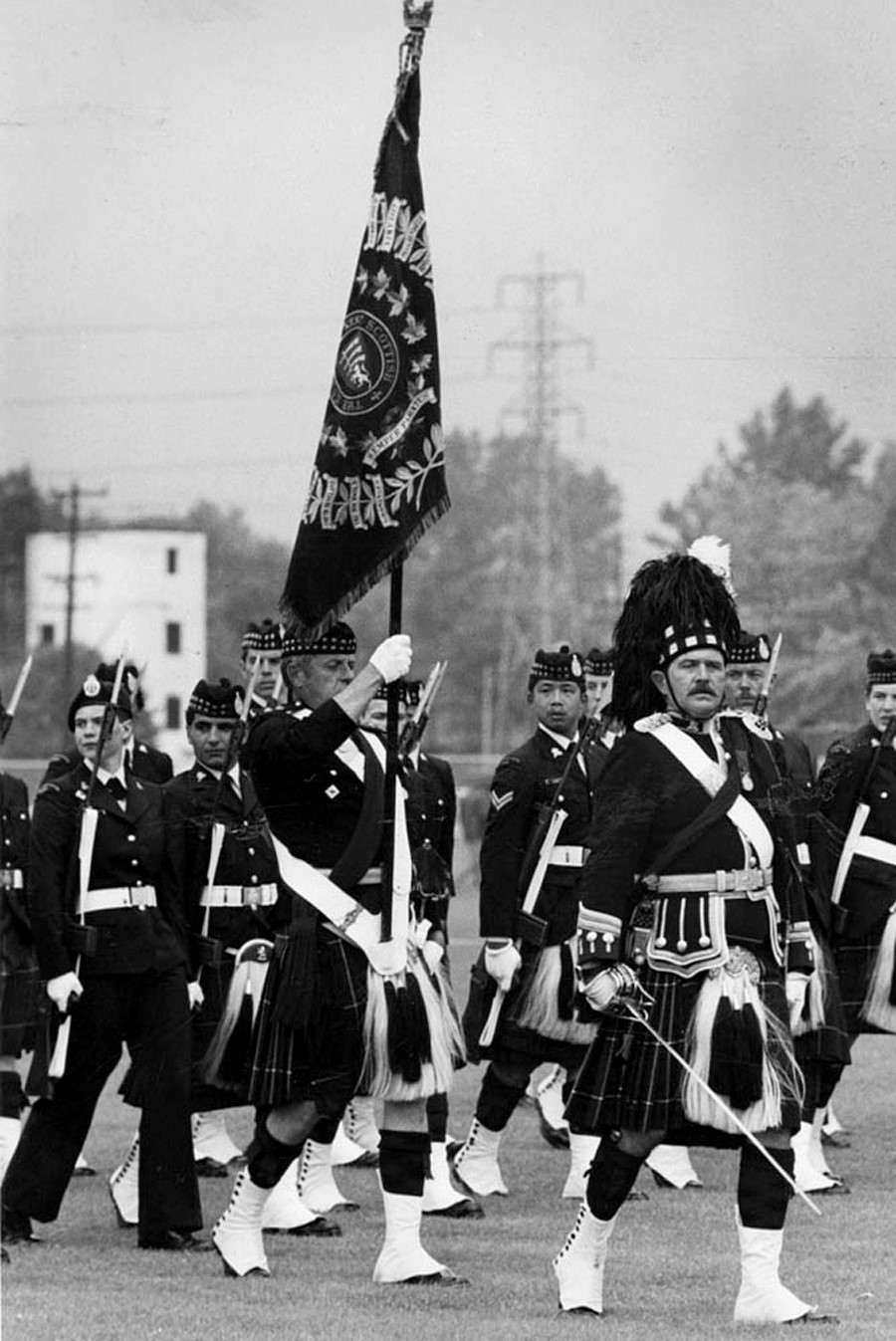
In 1985 the Regiment conducted back-to-back Trooping of the Colours in Windsor on 12 June and in Chatham on 13 June in celebration of 100 years of continuous service to Canada. The parades were reviewed by Honorary Colonel F.A.Tilston, VC. On Saturday there was a huge celebratory dinner at the University of Windsor. A highlight for the Regiment came on 23 April 1991 when it paraded to recognize the end of an era as Honourary Colonel Tilston passed his duties to W.L. McGregor. Tilston had served as an honorary since 1956; McGregor was a Dieppe veteran and related to the Prince and McGregor families whose history with the Regiment went back over 175 years. (Ch1)
After the fall of the Berlin Wall and end of the Cold War in 1989 the World changed. Training intensified with exercises at several American army bases and the quality of the unit improved. Throughout the 1990s it seemed there were always a few soldiers deployed on peace enforcment operations in the Former Yugoslavia. In 1994 the Regiment took a break for training and was presented its current Queen’s and Regimental Colours at a ceremony at Windsor Stadium. After the attacks on the US on 11 September 2001 there was heightened awareness of national security. Since then the Regiment has deployed many officers and soldiers to combat operations in Afghanistan and NATO training assistance and deterrence in the Middle East and Eastern Europe . At the same time public support for the military was much improved. This was evident in March 2002 when H.R.H. Prince Michael of Kent visited Windsor as the Regiment’s new Colonel-in-Chief, a position held by both his parents. Another event that raised the Regiment’s profile was in 2006 when the Regiment with the help and expertise of “Delta Company”, a group of local civilians dedicated to support the Regiment, was able to raise significant money to erect a large black granite memorial at Red Beach in Dieppe, France. An identical memorial was placed in Dieppe Gardens in Windsor in 2010.
Today, the Regiment is housed in two new armouries (Tilston Armoury, Windsor – 2004 and Ansell Armoury, Chatham – 2006), focused on Canada’s international treaty obligations if the need arises, Defence of Canada especially in winter and keeping a high profile in the community. A fine regiment continues its service to Canada.
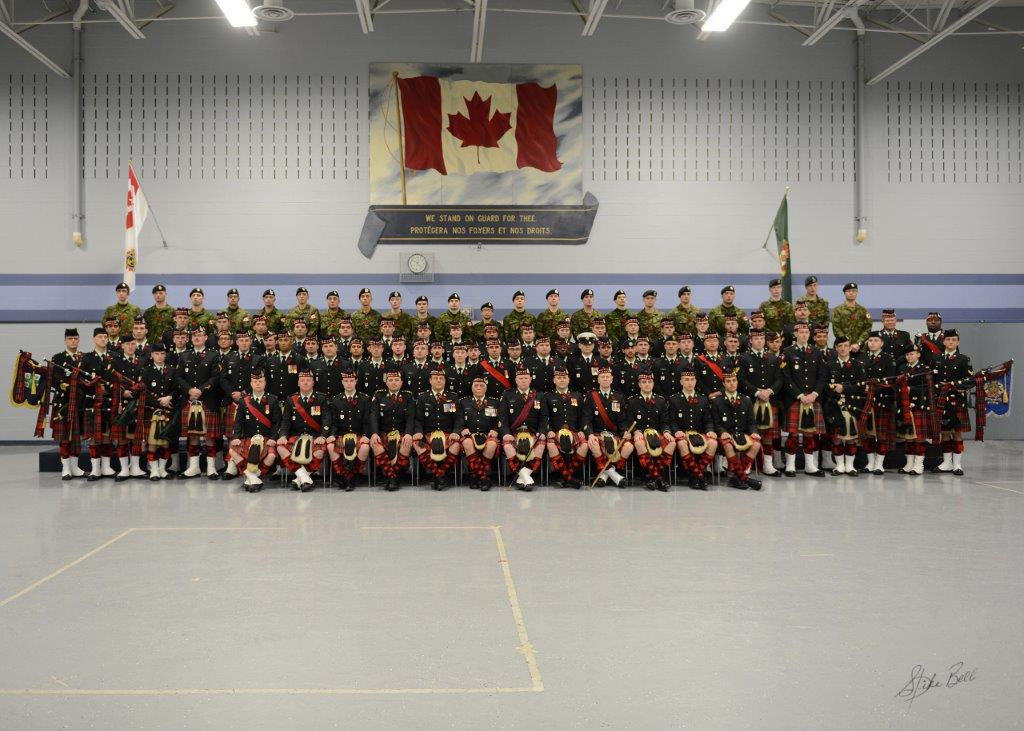
Compiled by LCol (Retired) F. Hardy Wheeler in 2008, from Duty Nobly Done, The Official History of The Essex and Kent Scottish Regiment, and updated in 2012 and 2020. (Ch8)
